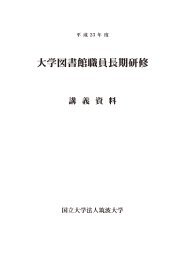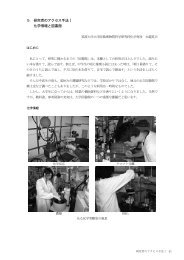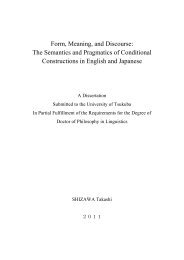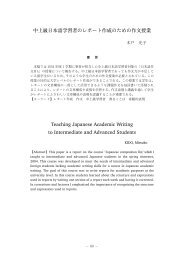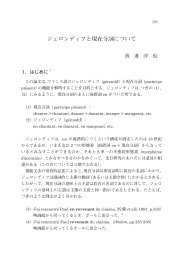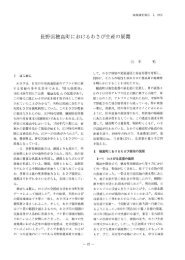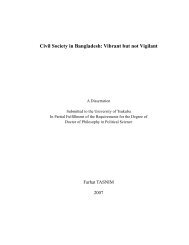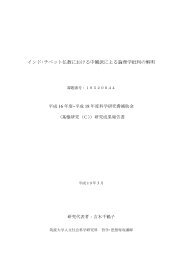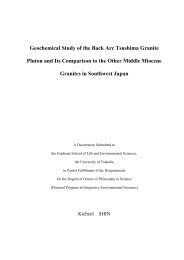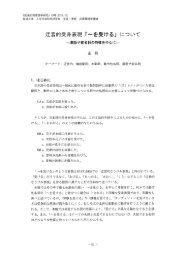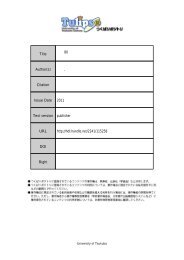Gamma Rays and CarbonIon-Beams Irradiation for Mutation ...
Gamma Rays and CarbonIon-Beams Irradiation for Mutation ...
Gamma Rays and CarbonIon-Beams Irradiation for Mutation ...
Create successful ePaper yourself
Turn your PDF publications into a flip-book with our unique Google optimized e-Paper software.
which migrated faster (Rf = 0.44) than that of the mutant ‘GN-60 Gy/A’. In<br />
addition, three other b<strong>and</strong>s were not observed in the mutant, but only in the<br />
original ‘Gr<strong>and</strong> Nain’. Such b<strong>and</strong>s were less densely stained with <strong>and</strong> Rf<br />
value of 0.19, 0.31 <strong>and</strong> 0.64 <strong>and</strong> molecular weight of about 94 <strong>and</strong> 26 kDa,<br />
respectively (Novak et al., 1990).<br />
Regarding to the tissue culture, this technique has<br />
revolutionized banana cultivation <strong>and</strong> has replaced the use of conventional<br />
vegetative suckers in many of the intensive banana-growing regions. It is<br />
estimated that up to 50 million tissues cultured plants are produced<br />
annually. The use of tissue culture planting material can prolong the pest-<br />
free period <strong>for</strong> months or possibly years. The ubiquitous pests Radopholus<br />
similis, the burrowing nematode <strong>and</strong> Cosmopolites sordidus, the banana<br />
weevil are examples of problems that have arrived with the conventional<br />
vegetative suckers. The problem of viruses has not been solved by tissue<br />
culture <strong>and</strong> the international movement of some germplasm it will continue<br />
restricted until development of satisfactory methods of virus elimination.<br />
Banana streak virus (BSV) is a particular problem as it cannot be<br />
eliminated by the conventional techniques of heat treatment or apical tip<br />
culture (FAO, 2001a). However, Novak et al. (1990) have mentioned that<br />
in vitro culture of split shoot tips in liquid medium supported a high degree<br />
of shoot proliferation. Every 30 days, approximately 6-8 new shoots could<br />
be separated from a multiple shoot clump. This technique allowed the<br />
preparation of a sufficient amount of shoot-tips as test units <strong>for</strong> mutagenic<br />
treatment.<br />
The use of the floral axis tip from a “mother plant” versus<br />
vegetative apices from lateral buds of the same plant as a source of the<br />
primary explants were compared <strong>and</strong> contrasted. Materials from floral axis<br />
tip consistently showed high phenotypic uni<strong>for</strong>mity whereas materials from<br />
vegetative apices of “sword” suckers were less so. “Virus-like symptoms”<br />
16



